#1 - Prong Setting
Employing four or six prongs to secure the center diamond is a very traditional form of diamond ring setting type.
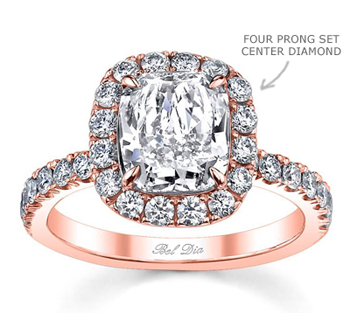
Employing four or six prongs to secure the center diamond is a very traditional form of diamond ring setting type.

#2 - Bezel Setting
A smooth bezel ring setting style requires the skills of a master jeweler and is a modern-looking alternative form of diamond setting.
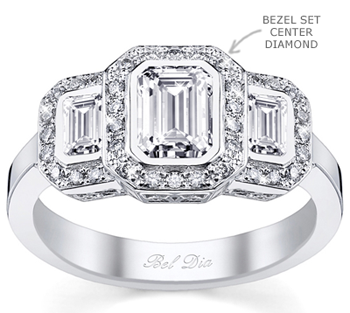
A smooth bezel ring setting style requires the skills of a master jeweler and is a modern-looking alternative form of diamond setting.

#3 - Open Gallery
A decorative open ring gallery design adds a beautiful touch of detail to an engagement ring and can be customized easily. Browse our ring gallery designs.

A decorative open ring gallery design adds a beautiful touch of detail to an engagement ring and can be customized easily. Browse our ring gallery designs.

#4 - Cathedral Setting
The graceful arches of a cathedral setting support and frame the center diamond while providing added height.

The graceful arches of a cathedral setting support and frame the center diamond while providing added height.

#5 - Hand Engraving
Hand engraving is a manual process performed by a skilled jeweler and is usually done along the shank of the ring.
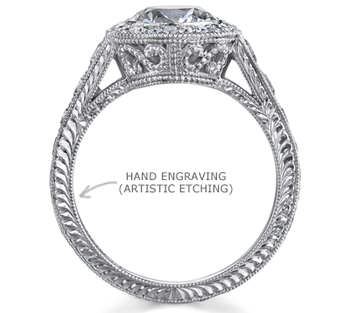
Hand engraving is a manual process performed by a skilled jeweler and is usually done along the shank of the ring.

#6 - Hand Engraving
This example shows a different hand engraving design from #5. Different designs can be done on the shank of the ring.

This example shows a different hand engraving design from #5. Different designs can be done on the shank of the ring.

#7 - Channel & Micro Pave Setting
Wider rings can accommodate multiple rows of diamonds. Here baguette diamonds and round diamonds set together.
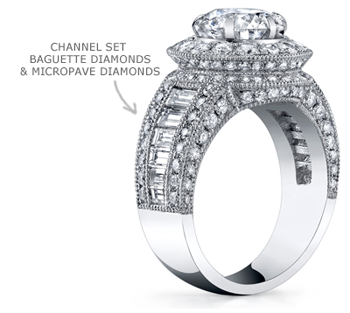
Wider rings can accommodate multiple rows of diamonds. Here baguette diamonds and round diamonds set together.

#8 - Channel Setting
Channel ring setting is a traditional style that offers a more secure setting compared to pave setting.

Channel ring setting is a traditional style that offers a more secure setting compared to pave setting.

#9 - Milgrain
Milgrain refers to tiny beads that are created manually along the edges of a ring and offer an antique look.

Milgrain refers to tiny beads that are created manually along the edges of a ring and offer an antique look.

#10 - No Milgrain
Without milgraining, the edges of the ring remain smooth — creating a more modern look.
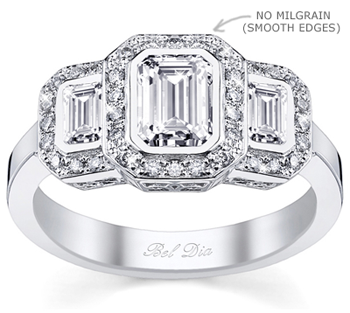
Without milgraining, the edges of the ring remain smooth — creating a more modern look.

#11 - Pave Setting
Pave or micro pave ring setting type is very popular right now and features small diamonds set close together.
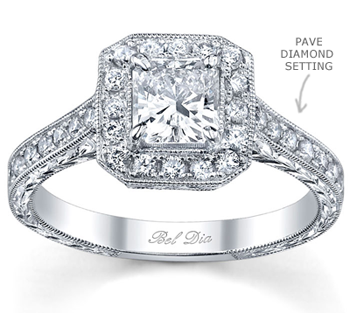
Pave or micro pave ring setting type is very popular right now and features small diamonds set close together.

#12 - Pave Setting
This is a very classic look for pave setting — the ring's shank looks literally paved with diamonds.
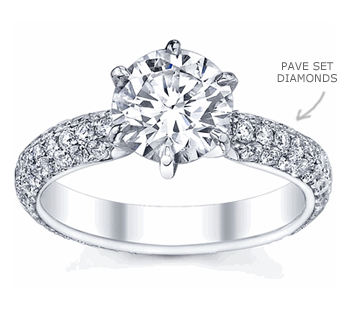
This is a very classic look for pave setting — the ring's shank looks literally paved with diamonds.

#13 - 'U' Pave Setting
'U' pave refers to the fact that little 'U' shapes can be seen along the edge of the ring.
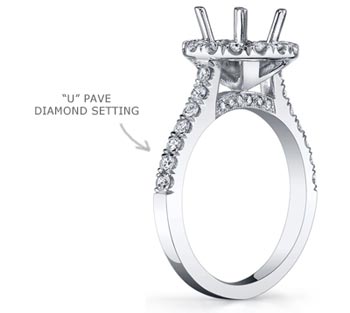
'U' pave refers to the fact that little 'U' shapes can be seen along the edge of the ring.

#14 - Split Shank
One way to create a wider ring but maintain a delicate look is by incorporate a split shank into the design.

One way to create a wider ring but maintain a delicate look is by incorporate a split shank into the design.

#15 - Round Diamond with a Square Halo
Usually the halo form follows the shape of the center diamond, but a popular alternative is this look.

Usually the halo form follows the shape of the center diamond, but a popular alternative is this look.

#16 - Halo with Truncated Corners
Another possible modification to the halo is truncating the corners for a more octagonal look.
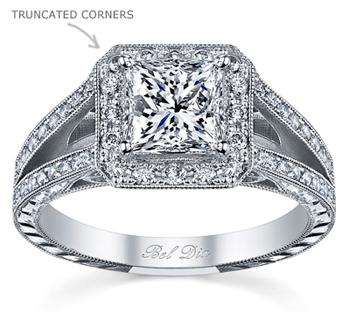
Another possible modification to the halo is truncating the corners for a more octagonal look.

#17 - Two Tone
Two tone rings can be created with any combination of gold or platinum for a unique setting.

Two tone rings can be created with any combination of gold or platinum for a unique setting.

#18 - Double Halo
A double halo consists two rows of diamonds perfectly framing the center diamond.
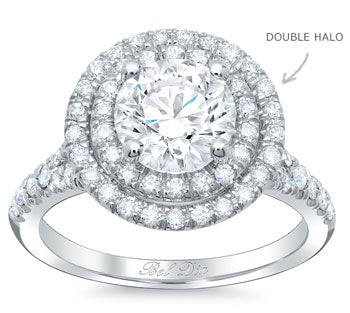
A double halo consists two rows of diamonds perfectly framing the center diamond.

#19 - Under Halo / Hidden Halo
Where diamonds on the basket consist of a row of diamonds circling the base of the center diamond.
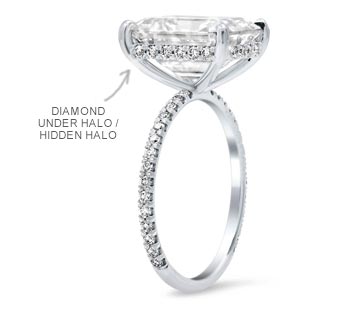
Where diamonds on the basket consist of a row of diamonds circling the base of the center diamond.

#20 - Diamonds on the Basket and Prongs
Diamonds on the basket and prongs consists of a row of diamonds circling the base of the center diamond as well as on the prongs securing the center stone.
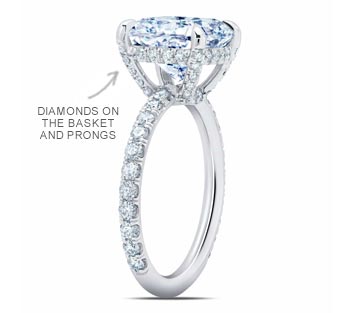
Diamonds on the basket and prongs consists of a row of diamonds circling the base of the center diamond as well as on the prongs securing the center stone.

#21 - Gallery Design in Window
Gallery design in window adds a decorative "fill" for the window, adding additional flair to the ring.
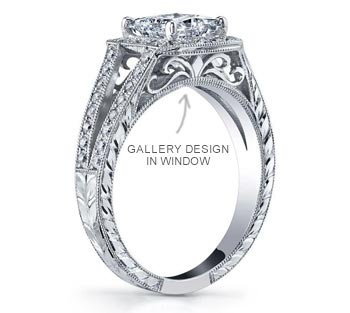
Gallery design in window adds a decorative "fill" for the window, adding additional flair to the ring.

#22 - Diamonds on the Bridge
Diamonds on the bridge of the ring add additional sparkle at the base of the finger.

Diamonds on the bridge of the ring add additional sparkle at the base of the finger.

#23 -French Pave
Giving the appearance of the 'V' shape of the base of a diamond, French Pave is a unique way to set diamonds.
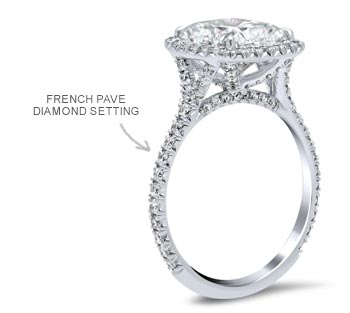
Giving the appearance of the 'V' shape of the base of a diamond, French Pave is a unique way to set diamonds.

